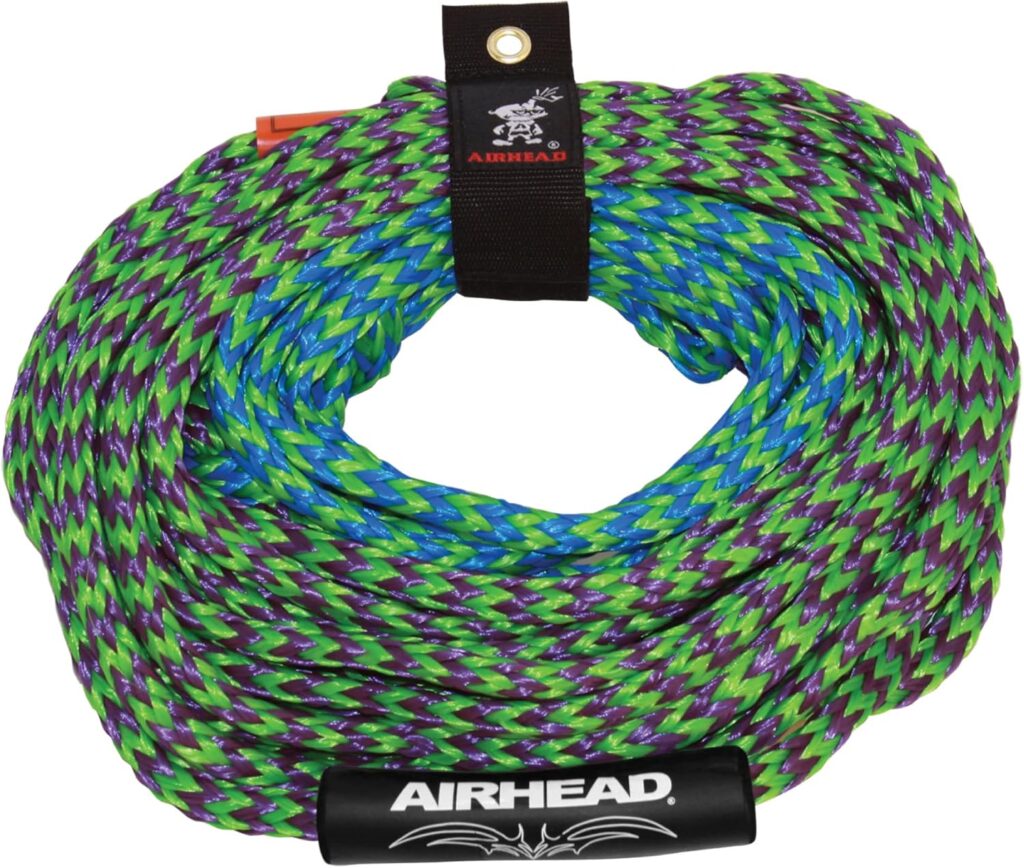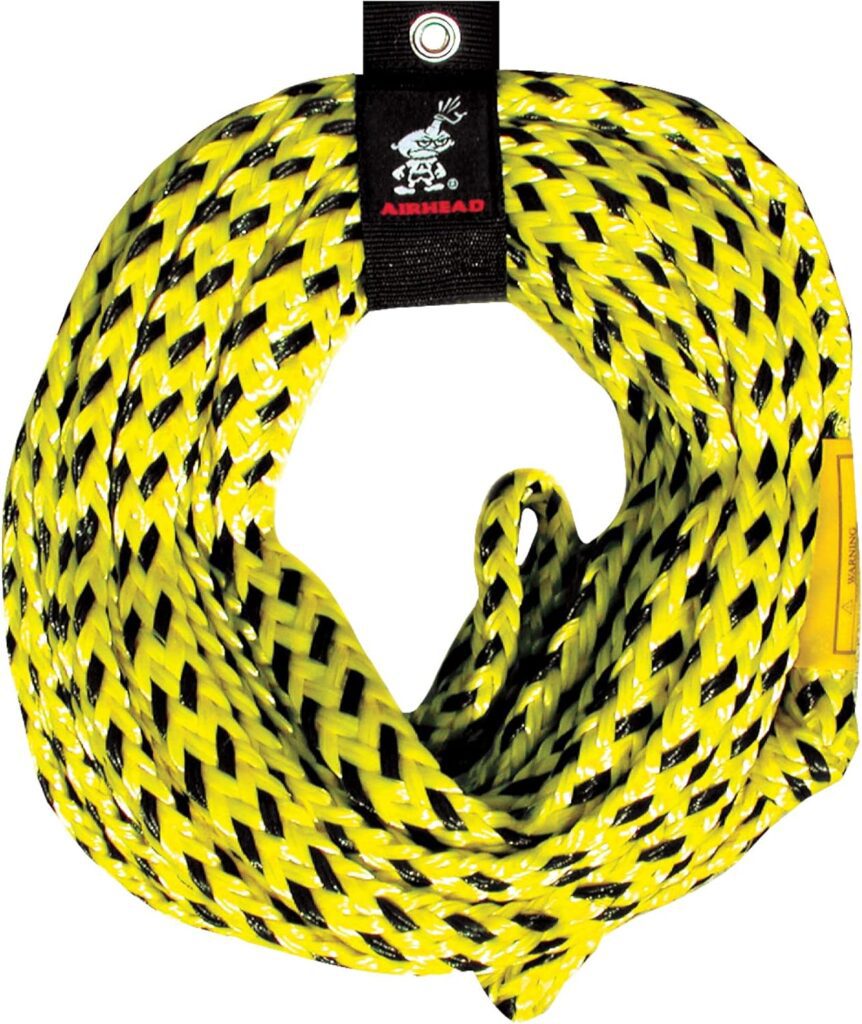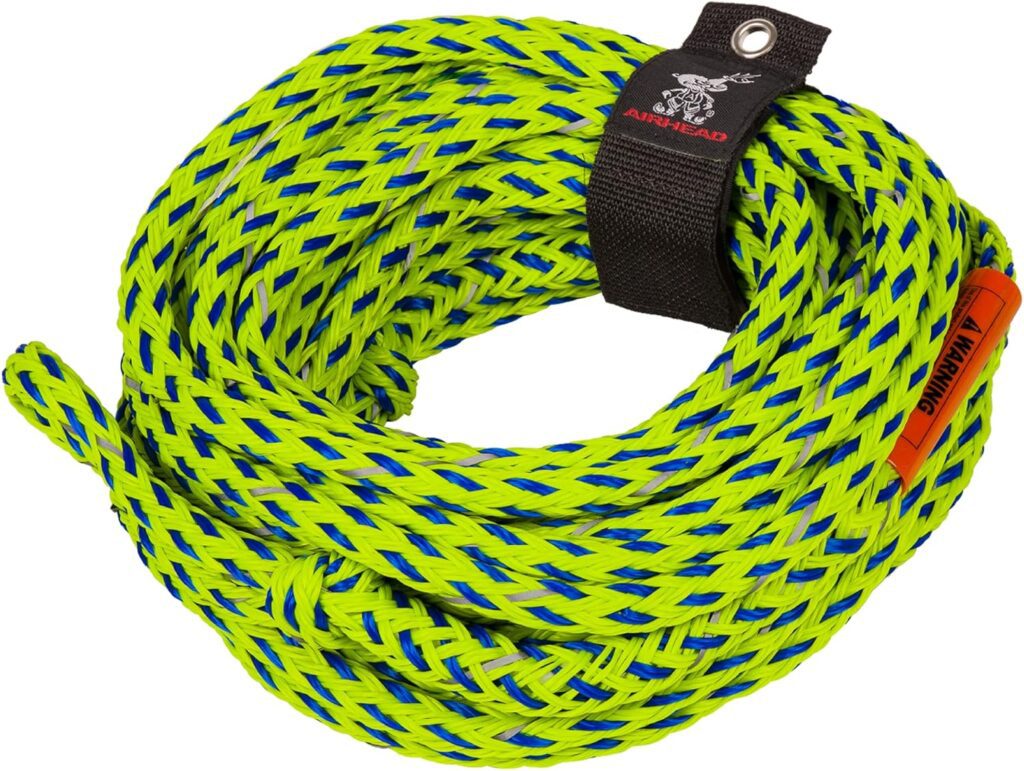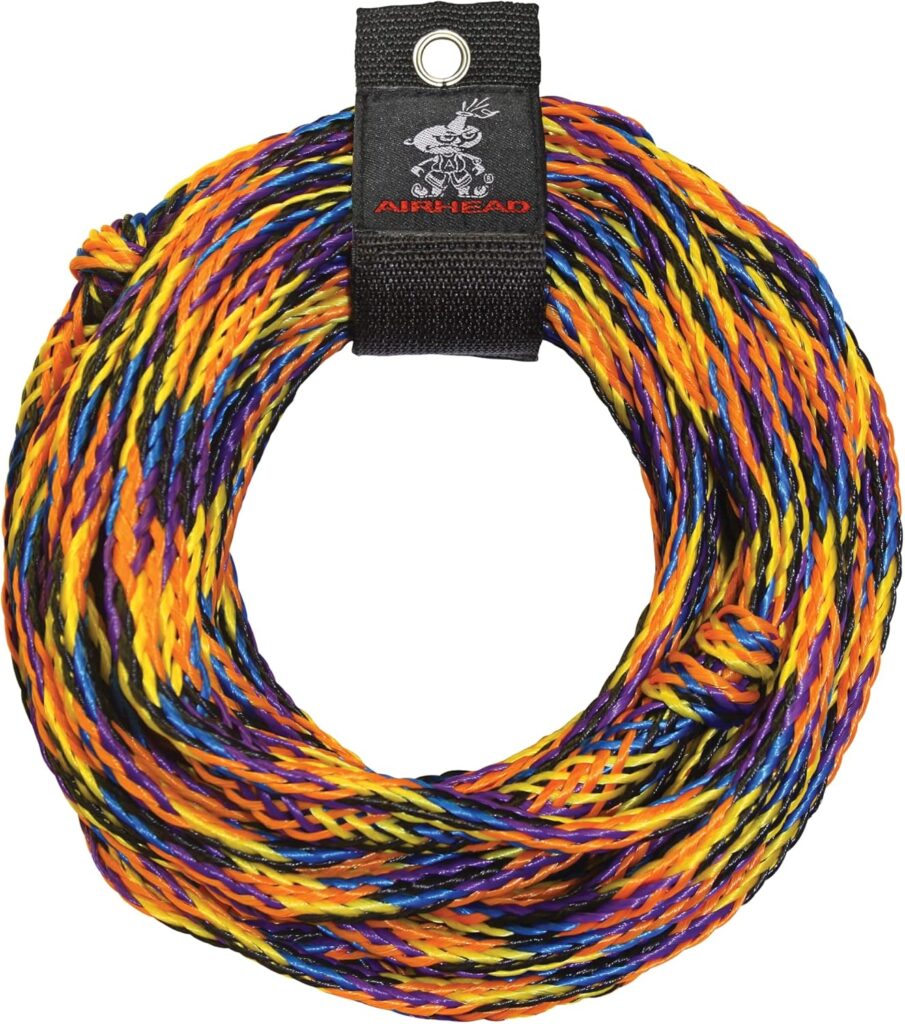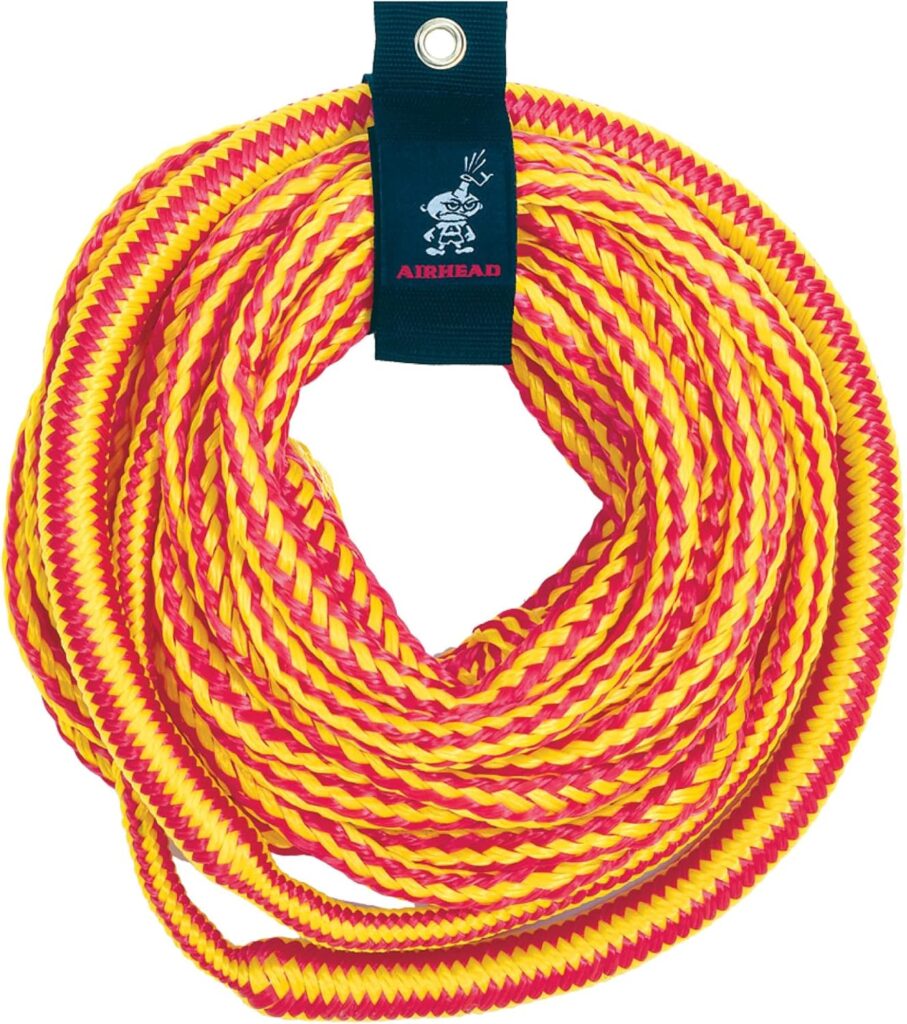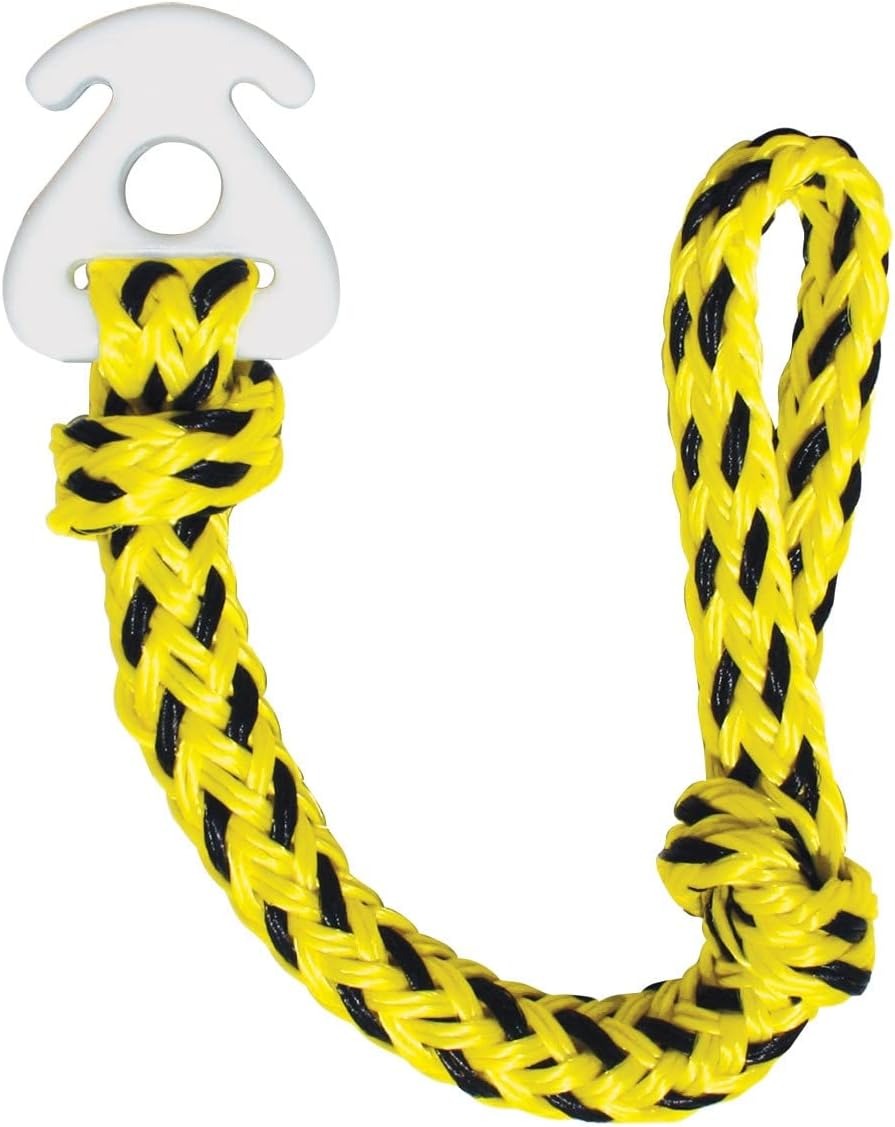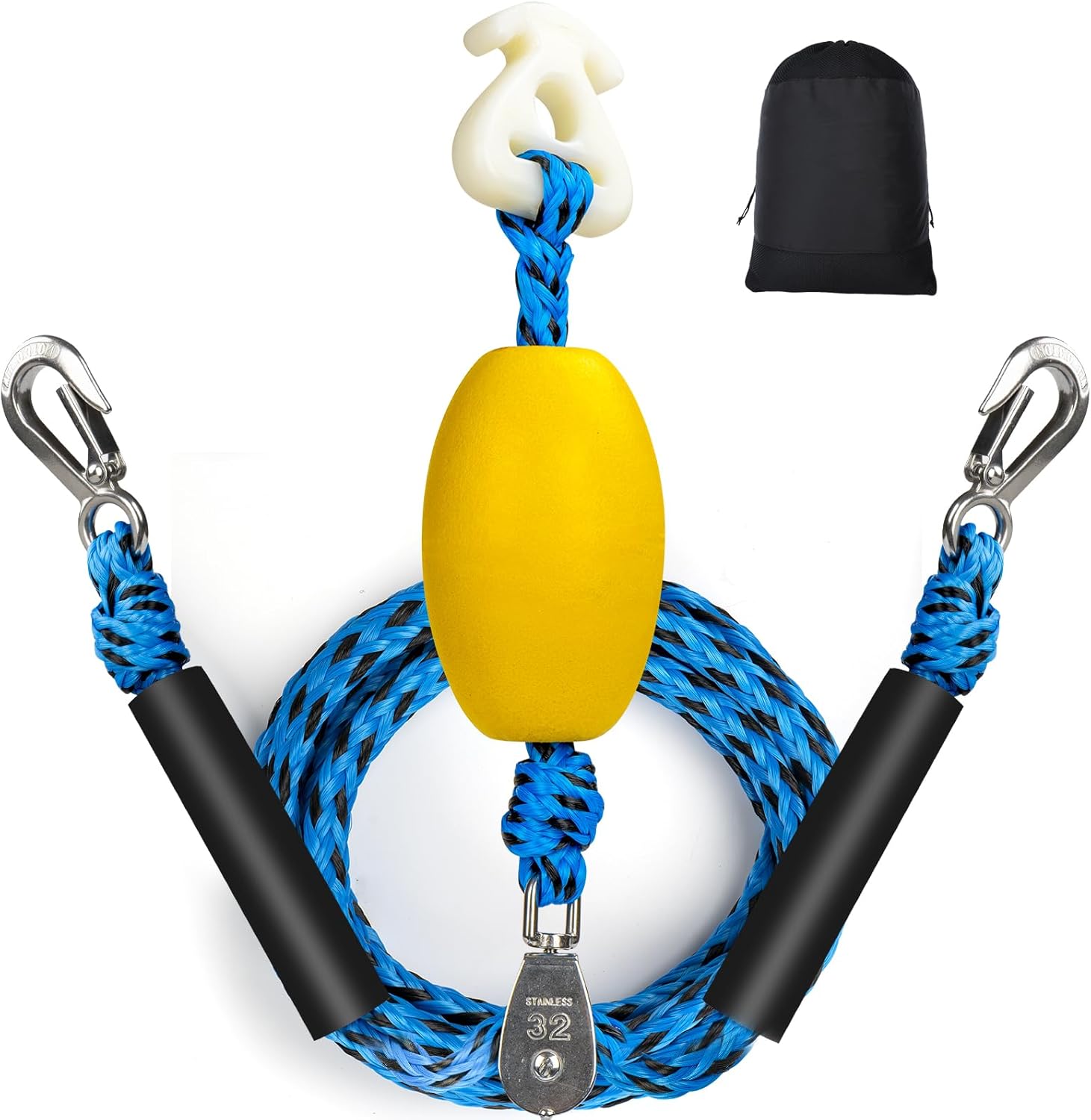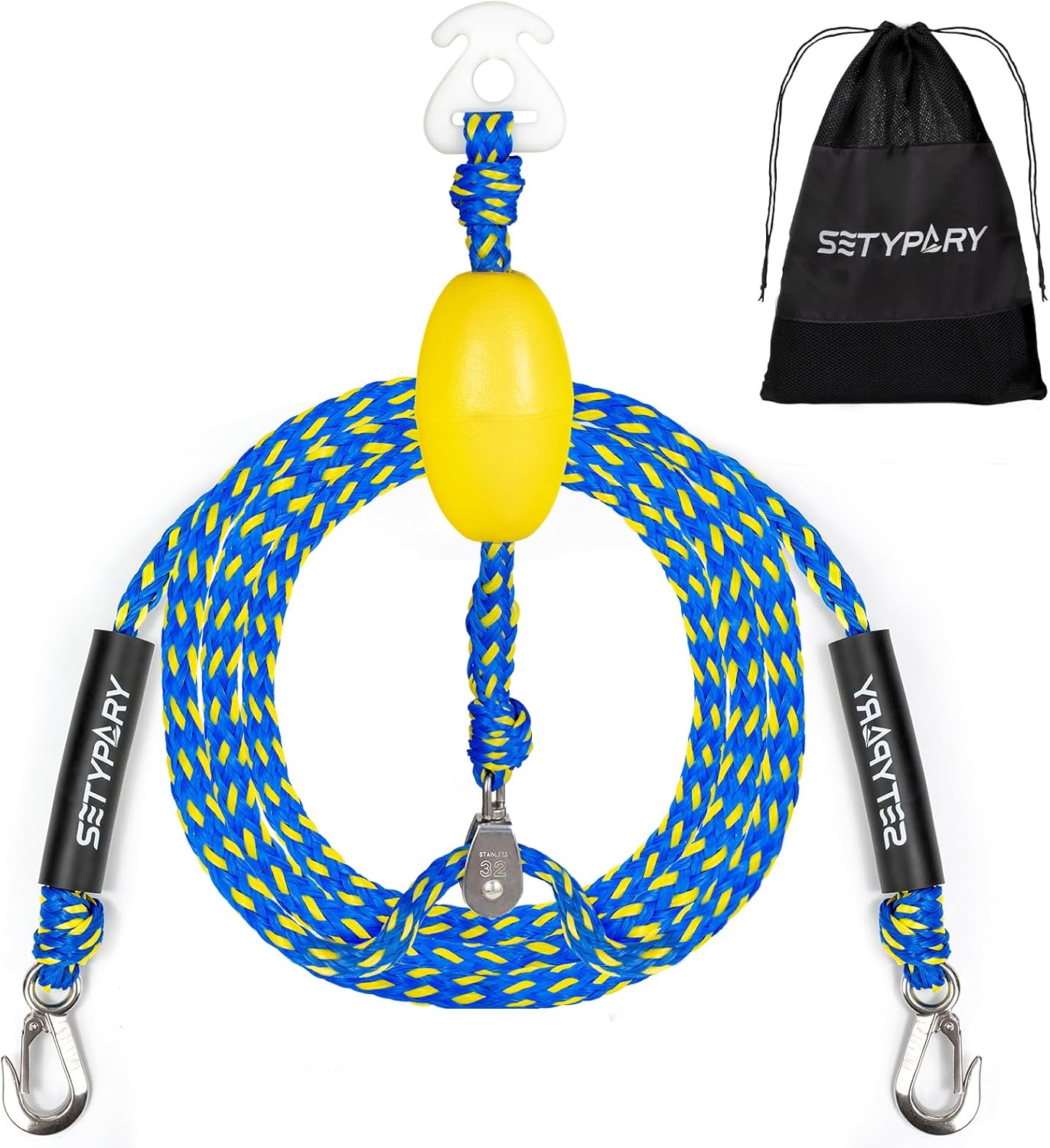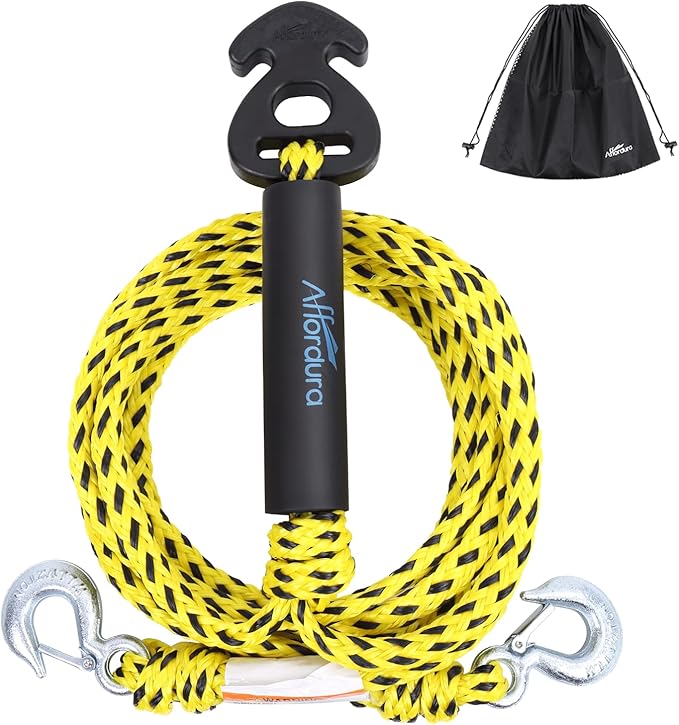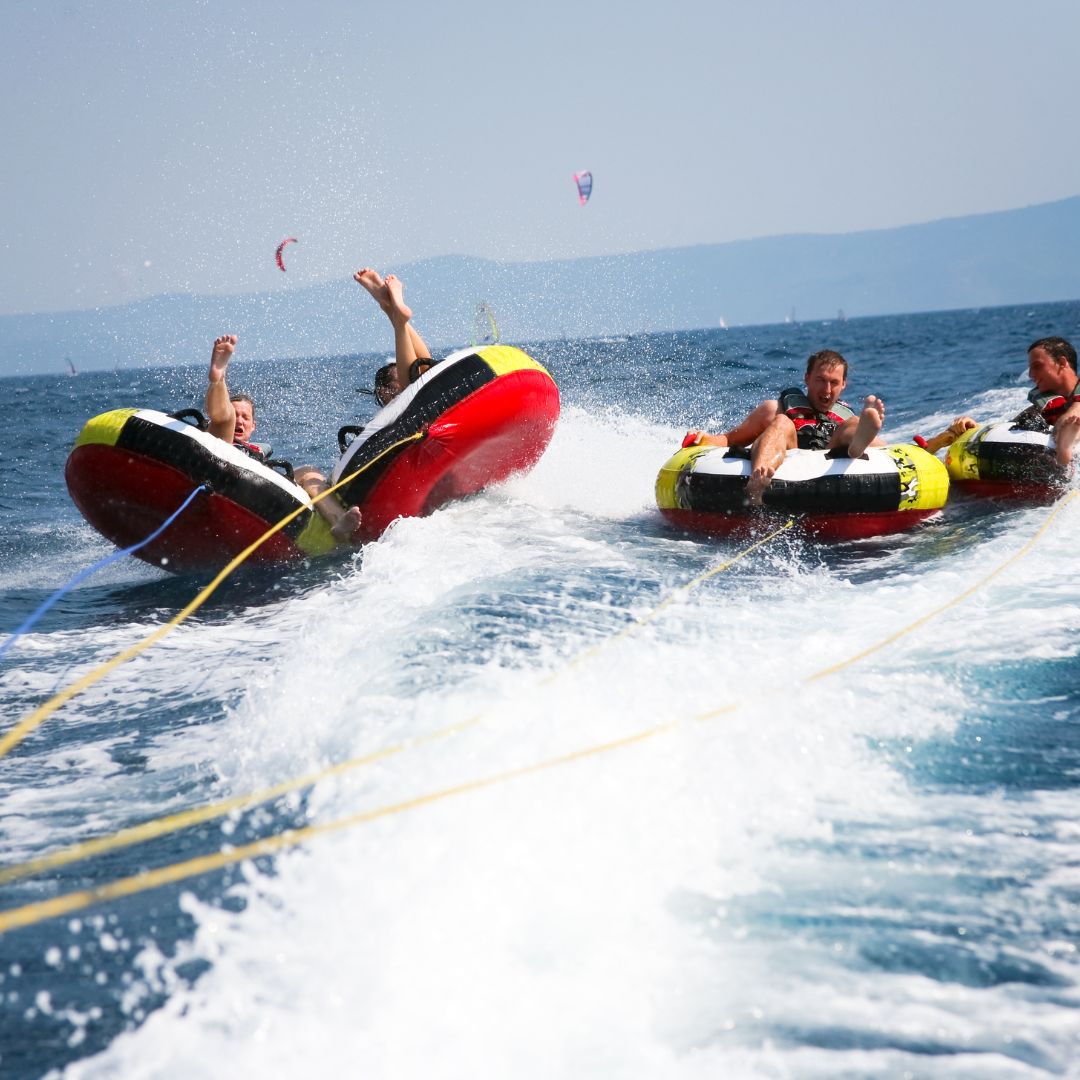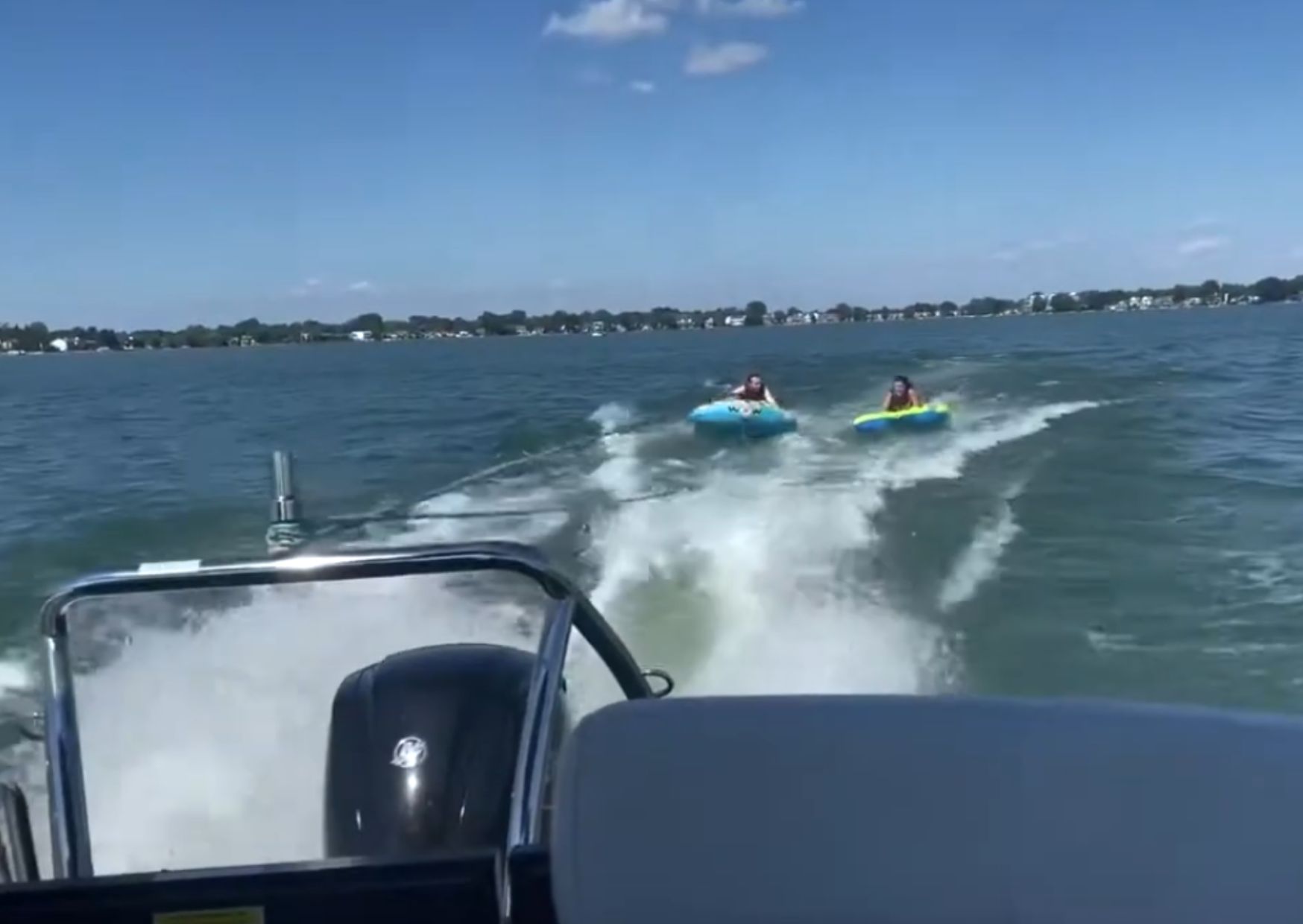Best Airhead Ropes For Tubing
Airhead ropes are the only thing standing between your kids’ joyful tubing experience and the kind of airborne somersault that ends with a tube in the neighbor’s cove and a very wet apology.
You don’t want to be the one googling “tow rope mishap” while explaining to your passengers why the tube is now floating solo. Let’s prevent that.
So yes, airhead ropes matter more than most people realize. Not just any rope will do when you’re towing 400 pounds of people at 25 miles per hour behind a boat that turns like it’s being chased by a mosquito. If you’re buying, replacing, or upgrading your tow rope, you’re in the right place.
What Are Airhead Ropes?
Airhead ropes are purpose-built tow ropes designed specifically for tubing behind boats. They’re made by the brand Airhead, which has become one of the most recognized names in recreational water sports gear.
These ropes are engineered to meet the demands of towing inflatable tubes, ranging from solo rider setups to those built for groups of four or more.
They differ from ordinary ropes in three key ways:
- Load capacity — Each rope is built to handle a specific number of riders and total weight
- Material — Typically made of high-tensile polypropylene for flotation and durability
- Design — Vivid colors for visibility, quick-connect hooks, and UV protection
If you’re asking whether it’s worth investing in dedicated airhead ropes, the answer is yes. They’re tested for high tension, continuous water exposure, and aggressive turns. Using something improvised or under-rated can cause breakage, injuries, or worse.
Best Airhead Ropes for Tubing
When you’re pulling riders across the water at 20+ mph, the last thing you want to question is your rope. Airhead ropes are built with consistent tensile strength, visible safety features, and thoughtful designs that reflect real-world boating conditions.
Whether you’re towing a lightweight single or a massive six-rider tube, these ropes offer tailored performance, comfort, and safety with minimal fuss.
1. Airhead Tow Rope, 1-4 Rider Rope for Towable Tubes Multi
With a 4,150-pound break strength and bright color for visibility, this rope offers both durability and safety. It performs well with mid-size tubes and maintains excellent tension, even during aggressive turns. Setup is quick, and the rope resists twisting or fraying over multiple seasons.
Pros
- Rated for up to 4 riders
- Strong polypropylene construction
- High visibility in water
- Coils easily for storage
- Minimal stretch under tension
Cons
- Too heavy-duty for single-rider setups
- May drag in water if not adjusted properly
2. AIRHEAD Airhead Tow Rope
Built for recreational boaters who prioritize simplicity and strength, this rope handles two to three riders easily. Its low-stretch material ensures consistent pull without any unexpected snapback. The design stays tangle-free with proper coiling and resists UV degradation across multiple outings.
Pros
- Solid tensile strength for general use
- Maintains shape in wet and dry conditions
- Lightweight and easy to manage
- Floats well due to built-in buoyancy
- Feels stable during high-speed towing
Cons
- No quick-connect feature included
- Less suitable for heavy tubes or five-plus riders
3. Airhead Reflective Tow Rope for 1-6 Rider Towable Tubes, 60-Feet
This rope stands out for its reflective fibers, making it visible in low-light or choppy water. It’s rated for up to six riders, making it ideal for families using larger towables. Despite the heavy-duty build, it remains flexible enough to coil without memory or stiffness.
Pros
- Reflective threads enhance safety
- Suitable for heavy or multi-rider towables
- 60-foot length offers smooth ride control
- Strong floating design
- Long-lasting even in saltwater conditions
Cons
- Overbuilt for small tubes
- Can feel cumbersome to handle when wet
4. Airhead Tow Rope for 1-2
Compact but reliable, this rope is ideal for lightweight tubes or beginner riders. Its lower tensile rating still meets safety standards while keeping the rope agile and quick to deploy. It’s easy to store and doesn’t require complicated rigging.
Pros
- Perfect for kids and lighter setups
- Simple to connect and disconnect
- Lightweight for faster acceleration
- Holds up well under moderate tension
- Affordable entry-level option
Cons
- Not compatible with larger tubes
- May feel too short for boats with wider wakes
5. AIRHEAD KWIK-TEK Bungee Tube Rope Extension
Designed as an add-on, this extension reduces shock by absorbing sudden pulls and slack. It softens the ride significantly, especially for smaller riders or tubes prone to jerking. Used with a standard rope, it enhances control without compromising on speed.
Pros
- Reduces tube whip and tension shock
- Pairs with most tow ropes
- Great for young or sensitive riders
- Easy to attach and remove
- Improves overall tubing comfort
Cons
- Not a standalone rope
- Adds bulk to rope management if not stored properly
READ ALSO: Best boat mirror for spotting riders
Understanding Tow Rope Ratings and Capacity
One of the biggest mistakes people make is choosing the wrong tow rope for tubing based on rider count. Airhead classifies their ropes by how many riders they’re designed for:
- 1-2 Rider Ropes: Usually rated around 2,375 lbs tensile strength
- 3-4 Rider Ropes: Typically rated up to 4,100 lbs
- 5-6 Rider Ropes: These go up to 6,000 lbs or more
Don’t confuse “rider” with “person.” If you’re towing two larger adults, that can exceed the limit of a standard 2-rider rope. Always factor in weight, water drag, and tube resistance. It’s safer to go one category higher than needed.
So, how long should a tube rope be? The standard length is 50 to 60 feet. That keeps the tube at a safe distance from the boat while still within planing speed. Too short, and you risk prop wash. Too long, and responsiveness drops.
Choosing Between Rope Types
Not all boat tube rope products are built the same. Airhead offers several variants:
a. Standard Polypropylene Ropes
These float, resist water absorption, and are brightly colored for visibility. Good for most recreational tubing.
b. Bungee Tow Ropes
Include an elastic stretch core to reduce shock loads during sudden starts and turns. Ideal for reducing strain on both tube and riders.
c. Heavy-Duty Ropes
Made for 5-6 rider tubes, reinforced with higher strand counts. If you own a massive deck-style inflatable, you need this.
d. Tow Ropes with Quick Connects
Airhead Kwik-Connect ropes make attaching and detaching easier and faster. They’re ideal if you’re constantly switching tubes or pulling multiple riders.
|
|
|
|
Rope Connectors: Do You Need Them?
Yes. The Kwik-Connect accessory offered with many Airhead ropes saves time and reduces error. Instead of tying knots that slip, stretch, or tangle, a Kwik-Connect lets you clip and go securely. It also makes it easier to detach after a ride without yanking or cutting.
If you plan on pulling two tubes behind a boat, you absolutely need Y-connectors and dual-rope setups, and you’ll want to consult Airhead’s heavy-duty line.
Preventing Tangling and Twisting
Even the best towable rope for tube setups can end in tangles if you don’t set it up correctly:
- Unroll the rope completely before each session
- Keep it straight during launch
- Don’t let slack build up behind the boat
- Make wide, deliberate turns to prevent coiling
Also: store the rope in a dry, coiled position. Don’t toss it in a ball and forget it. UV rays and moisture destroy cheap ropes fast. Airhead ropes last longer when properly stored and dried.
Safety Concerns with Tubing Ropes
There are two dangers you should never overlook:
- Snapback: If a rope breaks under tension, the recoil can be dangerous. A frayed or overloaded rope is a risk.
- Overloading: Using a 2-rider rope with 4 riders is like towing a truck with dental floss.
Airhead ropes come with clear labels for capacity and usage. Never guess. Always inspect the line for frays, broken strands, or stiffness before use.
Using Booster Balls: When and Why
Booster Balls (like the Airhead Booster Ball) elevate the rope above the waterline, reducing drag and keeping it from sinking. This makes turning easier and prevents submersion at high speeds.
You should consider one if:
- You’re pulling large tubes
- You often hit rough water or experience drag
- Riders complain about choppy rides or sudden dips
A booster ball extends the life of your boat tow rope and makes rides smoother. It also adds visibility.
How to Hook Up the Rope to the Tube and Boat
If you’ve ever stood on the dock wondering which end goes where, you’re not alone. Here’s how to attach a tube rope properly:
- To the boat: Use the tow eyelet or towing harness loop. Do not use cleats or handrails.
- To the tube: Either tie directly to the built-in loop or use a Kwik-Connect hook for security.
- Check the length: 50 to 60 feet from stern to tube.
And if you’re asking how to pull a tube behind a boat, start at low speed (10-15 mph), especially with children. Adults can handle 20-25 mph, but anything above that increases injury risk. Gradual acceleration, wide turns, and constant visual monitoring are key.
Rope Maintenance and Lifespan
A well-cared-for tube rope lasts 3 to 5 seasons. Signs it needs replacing:
- Frayed edges
- Discoloration or stiffness
- Loss of floatation
- Mysterious stretching
To extend life:
- Rinse after saltwater use
- Store dry, coiled, and away from sunlight
- Avoid stepping on it during launch or haul-in
Comparing Airhead Ropes to Other Brands
Airhead isn’t the only player in the market, but it’s one of the few focused solely on recreational tow gear. Others may offer cheaper ropes, but they often lack:
- Proper tensile certification
- UV resistance
- Quick-connect systems
- Length and strength labeling
If you want peace of mind, Airhead’s testing and safety reputation are hard to beat. They’re considered the best tow rope for tubing by many boating families for a reason.
FAQs About Airhead Ropes
Q: Can I use a ski rope or climbing rope instead? No. These aren’t rated for lateral drag and sudden weight shifts that come with tubing.
Q: Can I pull more than one tube? Yes, but you’ll need a Y-connector, strong rope, and dual-rated setup. See: How to pull two tubes behind a boat.
Q: Are these ropes child-safe? Yes, if used as directed. Children should never ride without life vests, and adults should control speed.
Q: What is the best towable tube for boating? Look for options with multiple handles, thick bladder material, and clear rider limits. The tube must be compatible with your rope’s rating.
Q: Where do I buy real Airhead ropes? Buy direct from Airhead or from verified sellers on Amazon or marine stores. Be cautious of lookalikes with similar names.
The Bottom Line on Airhead Ropes
Airhead ropes are more than just rope. They are a safety tool, a performance component, and a surprisingly technical part of your boating setup. If you care about keeping your friends and family safe while maximizing fun, you need to take rope selection seriously.
Get the right size, understand its features, inspect it regularly, and store it properly. It doesn’t matter if you’re new to tubing behind boats or you’ve been pulling tubes since the early 90s. Your rope is your lifeline.
Choose wisely. Ride safely. And maybe don’t let Uncle Dave drive the boat after his second soda.
